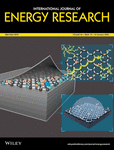Redox flow battery time-varying parameter estimation based on high-order sliding mode differentiators
Funding information: “la Caixa” Foundation, Grant/Award Number: LCF/BQ/DI21/11860023; Agencia Nacional de Promoción de la Investigación, el Desarrollo Tecnológico y la Innovación; Consejo Nacional de Investigaciones Científicas y Técnicas; Universitat Politècnica de Catalunya; Ministerio de Ciencia e Innovación; Consejo Superior de Investigaciones Científicas; Universidad Nacional de La Plata
Summary
A new insight into vanadium redox flow batteries (VRFB) parameter estimation is presented. Driven by the electric vehicles proliferation, a hybrid fast-charging station with grid and a renewable energy connection is particularly considered. In this stationary application, the VRFB is operating as buffering module. This hybrid topology could contribute to reduce the grid connection cost of the charging station. However, to make VRFB a viable technology, improvements are needed. Among these, some of the most important are in the field of the estimation of the battery's State of Charge, State of Health, and internal parameters. The proposed estimation method is based on a recursive least square (RLS) estimation algorithm with forgetting factor, combined with a sliding mode finite-time convergent differentiation algorithm. The latter provides robust exact derivatives of both VRFB's current and voltage with a high degree of noise rejection, required by the RLS algorithm to perform a precise estimation. The proposed sliding mode-based estimation setup is completed with a systematic methodology to guarantee the validity of the on-line estimated values, depending on the persistence of excitation of the measured current and voltage. Finally, the methodology is thoroughly analysed and validated by computer simulation.
Open Research
DATA AVAILABILITY STATEMENT
The data that support the findings of this study are available from the corresponding author upon reasonable request.




